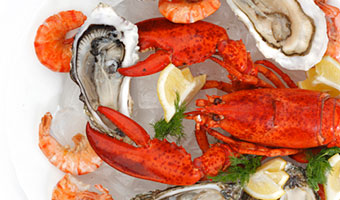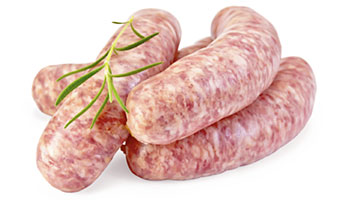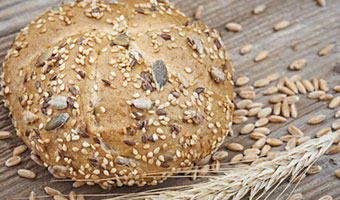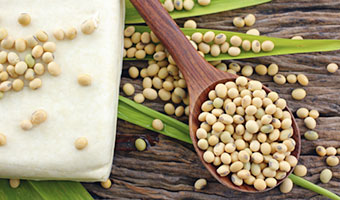A customer can be allergic or intolerant to, and wish to avoid, any food. In the EU, there are 14 major allergens of concern which must be identified on the label when used as a deliberate ingredient in any pre-packed food product. The 14 major allergens are detailed below, along with information on foods in which they are commonly found. Of these, the following feature most commonly in causing allergic reactions groundnuts (peanuts), tree nuts (e.g. almonds, walnuts, cashews, Brazils), sesame (e.g. seeds, paste and oil), fish, shellfish, dairy products and eggs.
Note, certain foods such as milk and wheat are associated with both allergy and intolerance. Avoiding foods like peanuts, nuts, seeds, milk and eggs in packets, bottles or in jars is relatively easy. It is more difficult where they could be hidden in a multi-ingredient food. For example, peanut traces can occur in a wide range of foods, cosmetics and even in medicines where the ingredient labelled arachis oil is, in fact, peanut oil. Gluten containing wheat is used in many baked goods and fish protein is a hidden ingredient in Worcester sauce.
Peanuts

Peanuts can trigger severe reactions including anaphylaxis. Other names for peanuts include groundnuts, earth nuts, goobers, goober peas, ground peas, pindas, monkey nuts and Chinese nuts. Peanut is also used to produce oil and flour. Refined peanut oil is unlikely to cause a reaction but unrefined peanut oils are unsuitable for anyone with a peanut allergy.
Found in:
Breakfast cereals, cakes, biscuits, pastries, breads, cereal bars, mixed nuts. Chinese, Thai or Indonesian dishes including curries. The ethnic cuisines may also use unrefined peanut oil. Chilli, satay or pesto sauce; lasagne; mixed salads, salad dips and dressings; desserts including ice cream; peanut butter and nut spreads; vegetarian products; confectionery and nougat products; fruit yoghurts; hydrolysed vegetable protein; sausages and stuffing; boullion and Worcester sauce.
Fish

Fish can trigger severe reactions including anaphylaxis. Some people can react to the vapours during the cooking of fish. Some people who are allergic to one species of fish have been advised to avoid all species of fish because the allergic proteins are similar. There is a risk of cross contamination during harvesting and processing.
Found in:
Anchovies are a common ingredient of sauces like Worcester sauce, Caesar salad, salad dressings and pizza toppings Fish is often used in soups and stocks, pastes, stir-fry mixes and oriental sauces. Surimi is a white fish-based food that mimics more expensive crab, lobster and other crustaceans and shellfish.
Shellfish (Crustaceans and Molluscs)

Shellfish can trigger severe reactions including anaphylaxis. People who react to one type of shellfish may react to other types and very sensitive people can react to the vapours during the cooking of shellfish. Shellfish includes:
- Crustaceans – e.g. crab, lobster, prawn, shrimp, langoustine and crayfish
- Molluscs – e.g. mussels, scallops, oysters, clams, snails, periwinkles, whelks, squid and octopus
Found in:
Shellfish may be served on their own or as a hidden ingredient in dishes like fish pie or seafood chowder. They may be present in soups, stocks and highly processed foods.
Eggs

Allergic reactions to egg and egg products can range from slight to very severe including anaphylaxis. This applies to Eggs from all species including duck, goose, turkey and quail as well as hens. The main proteins causing reactions are in the egg white. Also derived from egg are:
- Albumen
- Lecithin-emulsifier (E322)
- Lysozyme
Egg allergy in children is very common but by the age of three about 50% will have grown out of it.
Found in:
Eggs are used as ingredients in many foods such as baked goods including bread and cakes, meat products, fresh pasta dishes, sweets and ice creams. Egg also performs specific functions, e.g. As binders to stick down the ends of spring rolls, to glaze pastry and to bind the meat in burgers.
Tree Nuts

Tree nuts can trigger severe reactions including anaphylaxis. Tree nuts include almond, hazelnut, walnut, cashew, pecan nut, Brazil nut, pistachio nut, macadamia nut and the Queensland nut. Unrefined nut oils like sesame and walnut oil are unsuitable for people with a nut allergy.
Found in:
Breakfast cereals, cakes, biscuits, pastries, breads, cereal bars. Chinese, Thai or Indonesian dishes including curries. The ethnic cuisines may also use unrefined nut oils. Chilli, satay or pesto sauce; lasagne; mixed salads, salad dips and dressings; desserts including ice cream; and nut spreads; vegetarian products; unrefined cooking oils including walnut and hazelnut oils. Marzipan confectionery including praline and nougat products; fruit yoghurts; hydrolysed vegetable protein; sausages and stuffing; bouillon and Worcester sauce.
Milk

People may be allergic or intolerant to milk. Cows milk allergy is normally associated with infants and young children, the majority of whom grow out of it. Allergic reactions to milk and milk products can range from slight to very severe including anaphylaxis. Milk allergic people will need to avoid milk and milk products from cows, sheep, goats and other milk-producing animals. People intolerant to milk are usually intolerant to lactose. They do not have the enzyme lactase in their gut to help them digest lactose.
Found in:
In addition to milk, the main foods to avoid are dairy products including butter, buttermilk, milk powder, cream, cheese, yoghurt and ice cream. Milk is also found in butterfat, butter oil, Ghee (clarified butter), curds and whey, caesin, sodium and calcium caesinate, fromage frais and crème fraiche. These foods are found on their own or as ingredients in many products.
Gluten

Gluten-containing cereals (e.g. wheat, barley, oats, rye, spelt and kamut). People need to avoid gluten containing cereals either because they are allergic or they are intolerant (Coeliac condition).
Found in:
Gluten containing cereals are found in breads, cereals, pastry products, pasta, pizza, biscuits and cakes and many bread crumbed or battered products or those dusted with flour before cooking. Wheat can be an ingredient in sauces as a thickener, in stock cubes, gravy granules and spice mixes in sausages and burgers.
Sesame

Sesame can trigger severe reactions including anaphylaxis. Sesame is also used to make pastes and oils.
Found in:
Sesame seeds are used in bakery products, breads and rolls and may contaminate other bakery products. Sesame paste (Tahini) is used in middle-eastern cooking and as an ingredient in humus a chickpea based dip, in Halvah a sweet confection and in a dry condiment called Gomashio. Sesame oils used for cooking or stir-fry may contain unrefined sesame oil and are considered high risk.
Celery

Celery, including the stalk (stick) and the root (celeriac), celery salt and seeds. People are more likely to be allergic to celeriac than the stalk but both can cause severe reactions. Celery is a common cause of oral allergy syndrome which causes redness, itching and blistering of the mouth, lips, tongue or throat immediately after touching the food.
Found in:
The sticks are commonly used as a salad vegetable or with a dip. Diced celeriac is also used as a vegetable in mashed form or roast or fried as a chip. Celery salt made from celery seeds is a micro ingredient of many soups, sauces, stocks and tomato based drinks like Bloody Mary.
Mustard

Allergy to mustard is uncommon in the UK being more prevalent on mainland Europe. Mustard comes in many forms including sprouted seeds, leaves, flowers, powder/flour and oil. All must be avoided by the allergic consumer.
Found in:
Sauces, marinades, curries, soups, salad dressings, e.g. salad creams and thousand island dressings, and as a condiment on its own. Also used for coatings on meat or fish products.
Sulphur

Sulphur dioxide (SO2) and Sulphites at concentrations of more than 10 mg/kg or 10 mg/litre expressed as SO. Sulphites include Sodium sulphite, Sodium bisulphite, Potassium bisulphite and Potassium metasulphite (E220-228). They are used as a preservative in many foods to maintain appearance and extend shelf life. SO2 may trigger asthmatic attacks.
Found in:
SO2 is commonly found in wine, beer and carbonated soft drinks. It is also added to foods like salads, fruits like pre-packed apricots and pre-prepared vegetables such as raw potato chips to maintain appearance and freshness. It is used as a preservative in meat products like sausages and beef burgers.
Lupin

Because lupin is botanically related to peanut, it contains similar allergens and can trigger anaphylaxis, so people with peanut/nut allergy should avoid lupin products.
Found in:
Lupin seeds from lupin flowers may be seen in, or on, speciality breads but are mainly used in the form of flour in pastry products including pies, pizzas, pasta and baked foods with batter e.g. waffles and onion rings.
Soybeans and soya

The soya bean can be ground to produce soya flour and textured vegetable protein and can be fermented to produce bean curd (tofu). Lecithin (E322), which is used as an emulsifier, can be made from unrefined soya oil.
Found in:
Soya flour is commonly found in baked goods, pastry, pasta dishes, cereals and processed meats. Tofu is made from coagulating soy milk into curd and pressing it into blocks. Textured vegetable protein is a meat substitute and used as a consistency enhancer in meat products. Refined soya oil is used in vegetable oil.
